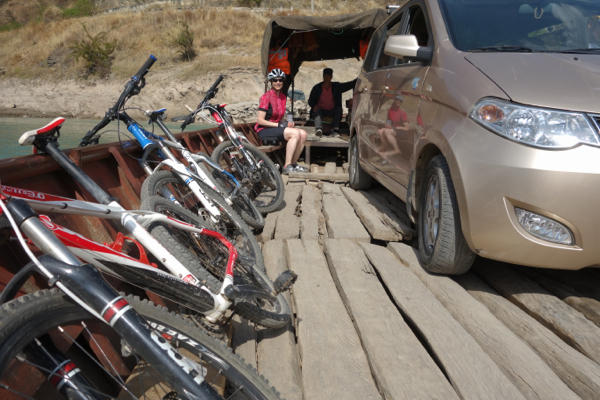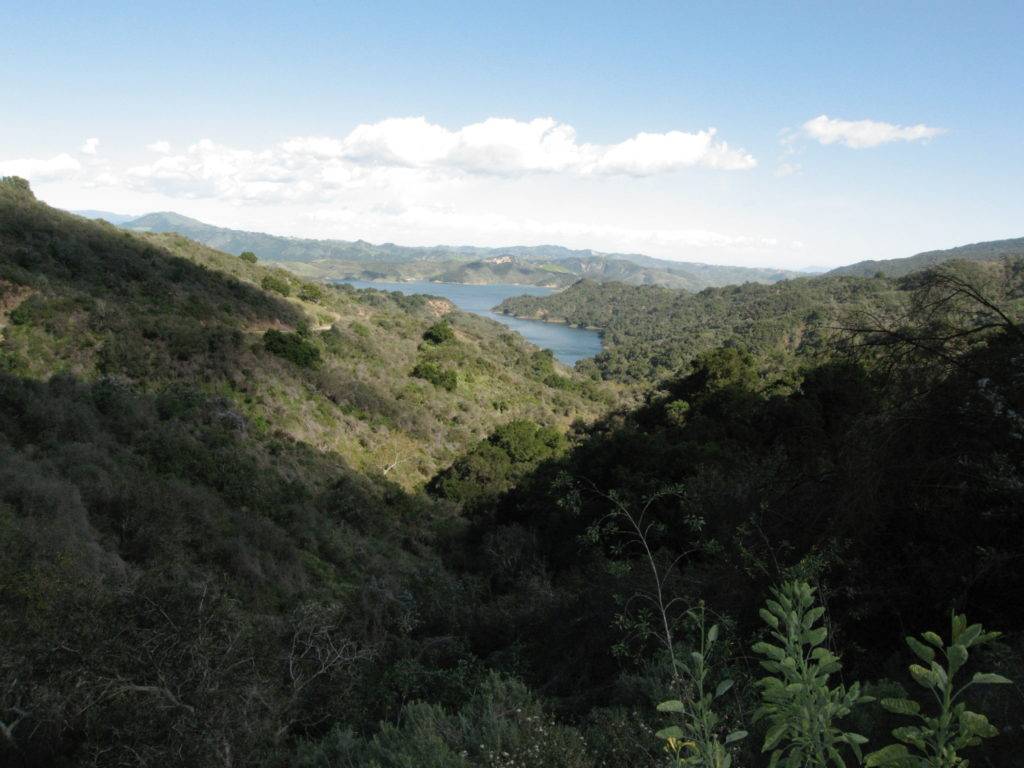One of the main reasons I like travel to developing regions is to intentionally put myself “out of context” and, as much as possible, connect with the local people and culture. Of course, with language and cultural barriers, achieving what feels like a real connection is difficult. This phenomenon is like a traveler’s version of the Heisenberg Uncertainty Principle or better–the observer effect–which describes how measurements of certain systems cannot be made without affecting the systems being measured. So, the conundrum for travelers is that you go there because you want to connect with the people and culture, but your mere presence makes it difficult to achieve that connection.
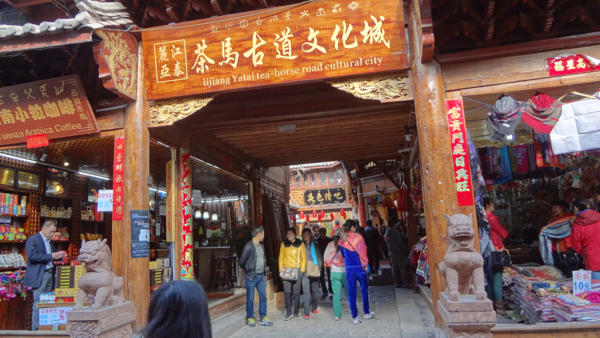
Traveling “out of context” can feel uncomfortable, but that’s the point. Over two weeks have passed since I’ve returned to the US from China and I’m still processing the experience. I feel like my mind was blown. These kinds of adventures leave a permanent mark (and in this case, as a result of my time in Beijing, maybe a little scar tissue in my lungs as well).
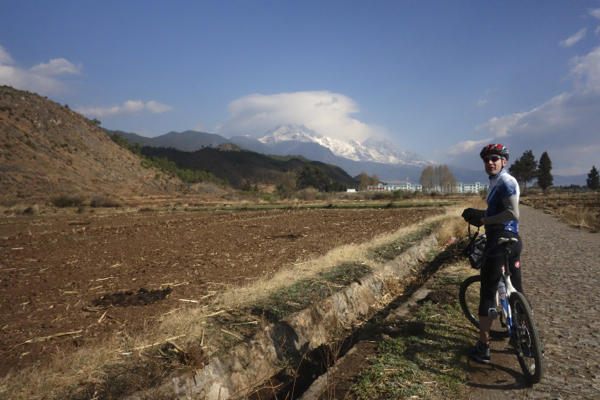
As part of an international education experience with University of Washington‘s Executive MBA program, I was in Beijing March 13-17. When that finished, my wife, her brother, and High Performance Cycling teammate Adam Morley converged in Yunnan Province to begin a ~10 day cycling adventure.
We didn’t research the possibilities much. On the recommendation of Patrick Morris who runs Velo Asia (we toured Vietnam with him in the early 2000s), we booked the trip with Bike Asia. It turned out that Adam had independently been lusting after a Bike Asia adventure for some time, and when I sent out invitations to join us he responded immediately. Since we all had relatively limited schedules, we arranged a 10-day version of their 14-day “Leaping Tiger Gorgeous” tour. Our version cut out the start in Shangri la (bummer), a few rest/hike days, and rearranged the route a bit.

We all rented hard-tail mountain bikes from Bike Asia. The route included everything from cobbles, loose sand, country roads and virgin superhighway. After a few days we agreed that mountain bikes were the best choice for this adventure. Our only complaint was that the bikes weren’t adjusted as well as we would have liked–the brake levers on my bike were reversed (the left lever worked the rear brake), and the rear derailleur shifted when it wanted rather than when I wanted. But, these were relatively small complaints and we agreed that renting was better than having to deal with shipping our own. An added bonus of renting their bikes was that the guides were set up to handle calamities: One day I took a fall and broke the right brake lever. We were amazed that they had a replacement and easily repaired it during the next food stop.

Back when we were planning the Vietnam cycling trip we reluctantly chose to go with an outfitter rather than do it on our own. After quite a bit of research we decided that going it alone would be a huge hassle that would distract from rather than enhance our travels. That cycling trip came at the tail end of 3 months of backpacking around Thailand, Laos, and Vietnam and up to that point we thought backpacking was the only way to truly experience those countries. The guided bike trip was a complete eye-opener because it exposed us to sights and aspects of the Vietnamese culture that we never would have experienced as backpackers. Now our trips incorporate both self-guided and guided travel. As much as I admire the kinds of self-guided adventures folks like Willie Weir do, I’ve learned from experience that I’d rather leave the planning and variables to a local.

Our starting point in Yunnan was Lijiang, a UNESCO World Heritage site and a popular destination for Chinese tourists. It was only after booking the trip that we realized what we were getting ourselves into: Lijiang is at an elevation of 7,900′, most of the route was above 6,000′, and our high point was over 10,500′. Although the daily mileage was modest (less than 50 miles/day), and the climbs were relatively modest, we were at elevation the entire time.
After arriving in Lijiang we had an afternoon and evening to explore the “old town” area which was reconstituted into a tourist center after a 1996 earthquake. Our guides selected a range of restaurants for us so that we would be able to try a variety of the local tastes. That first night’s meal featured green tea cakes (made of rice) that were so tasty we were on the lookout for them for the rest of the trip. Throughout the trip we were exposed to veggies we had never eaten before and that our guide didn’t know the English.
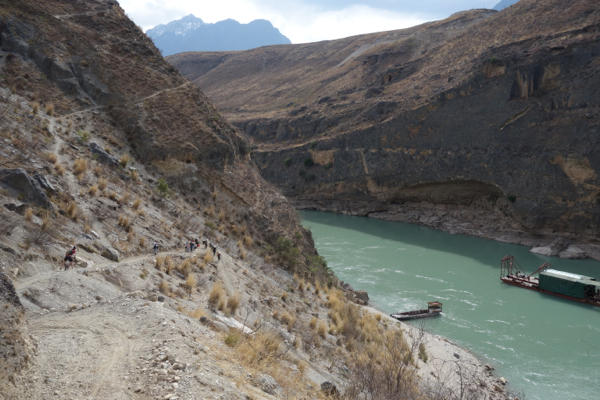
The first day of cycling was a warmup through Lijiang and to Tibetan Yufeng Temple (we didn’t expect to see temples in China let alone Tibetan temples…) north of the city proper which was celebrating a 500 year-old camellia tree. The event was super-crowded which gave us an opportunity to see a wide variety of locals in a state of celebration and reverence. Yunnan is home to twenty-five of China’s fifty-six recognized ethnic groups, and the diversity is evident through distinctive clothing and facial features.
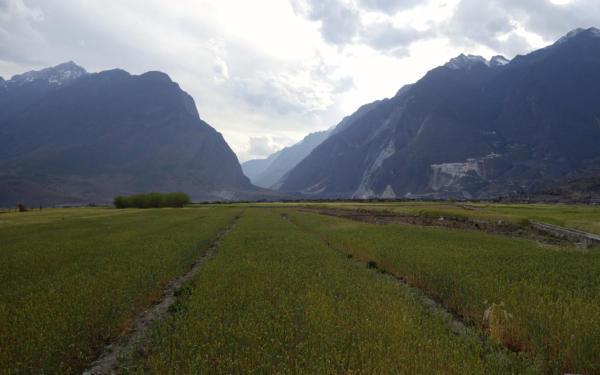
The cycling adventure began with a short van ride out of Lijiang to Jade Dragon Snow Mountain National Park. Against a backdrop of 18,000′ peaks, the riding started with a long climb on cobbles that made my filings hurt. We followed a ridgeline that passed small farming villages and Tibetan shrines. We crossed the tour’s high point then flowed down an endless series of switchbacks that dropped 5’000′ in 36 km. Lunch was at a residence in a farming village along the Yangtze river. This turned out to be our “National Geographic day” when a band of locals arrived to porter our gear down to the river and the first of two Yangtze crossings. After the ferry crossing we had dicey exit from the ferry boat onto some boulders, a strenuous climb up out of the river basin, followed by a leisurely ascent towards Tiger Leaping Gorge. That entire day was simply spectacular. We spent the night at a guesthouse in the village of “Walnut Grove” high above the rapids below.
Leaping Tiger Gorge is considered one of the deepest gorges in the world with about 11,000′ of vertical relief between the Yangtze and the peaks above. The gorge is named after a mythical tiger that legend says leaped across the gorge at its narrowest point. Now it’s popular with Chinese tourists who come to witness the rapid. From the cyclist’s perspective, this day involved quite a bit of climbing from Walnut Grove, sweeping descents, and a few landslide crossings: Yunnan Province has a particularly unstable geology and experiences frequent earthquakes.
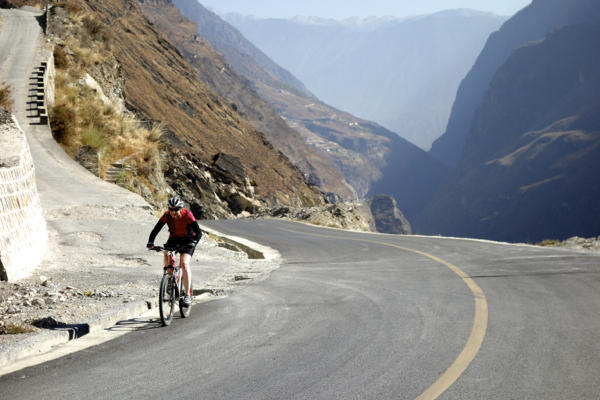
The route continued south and as the third day of cycling came to a close we did the second Yangtze river crossing at the auspicious First Bend where the river makes a nearly 180 degree hairpin turn from south to north. We overnighted in the small trading town of Shiguzhen in a “classic” Chinese inn with rooms surrounding a shared courtyard (in fact most of the places we stayed were like this.)
One of the most humorous episodes of the trip occurred in Shiguzhen when Adam discovered that the translation app on his smartphone worked well enough to communicate with our driver who didn’t speak English. The result: Tit for tat beer purchases between the driver and Adam.

